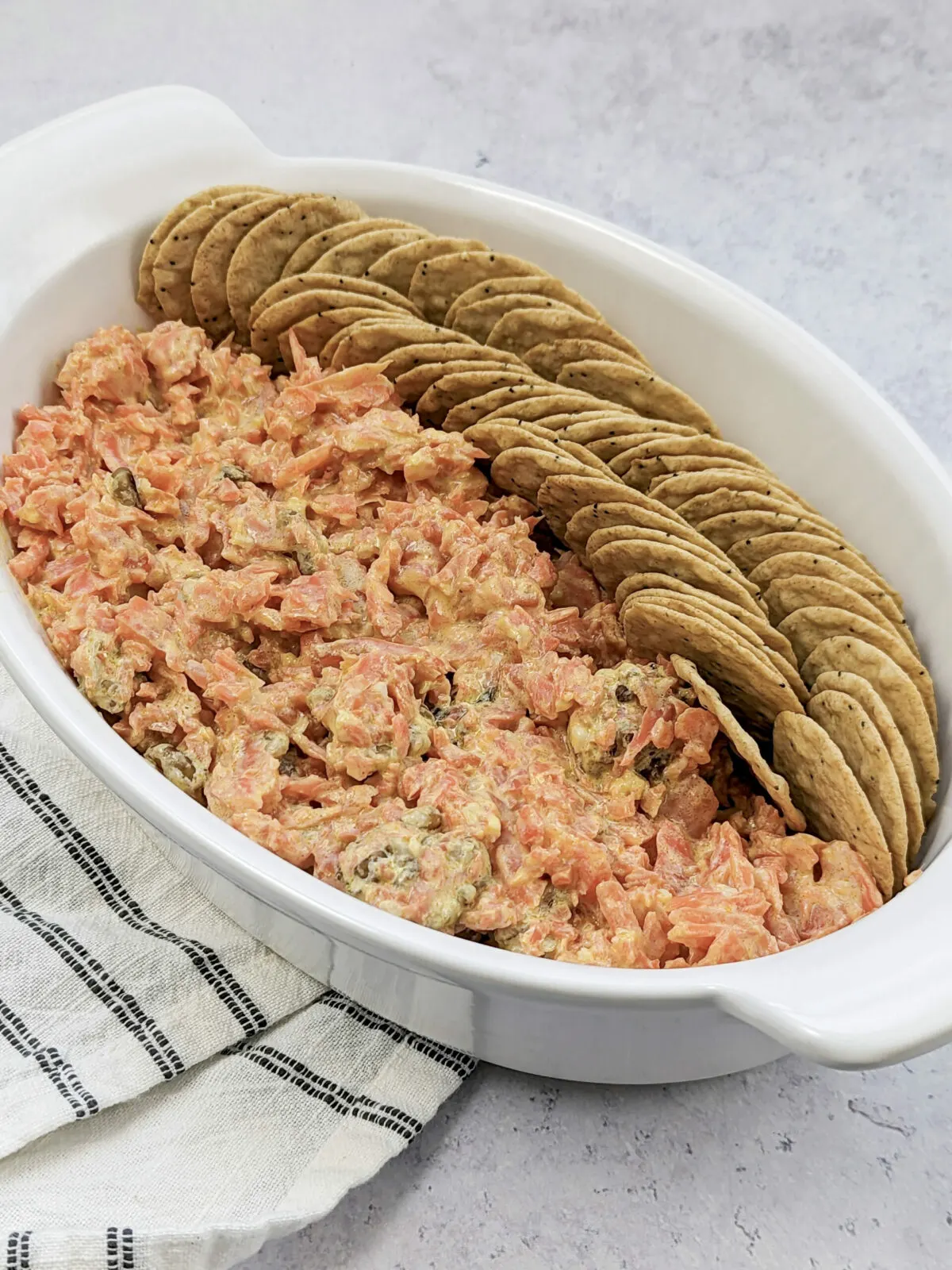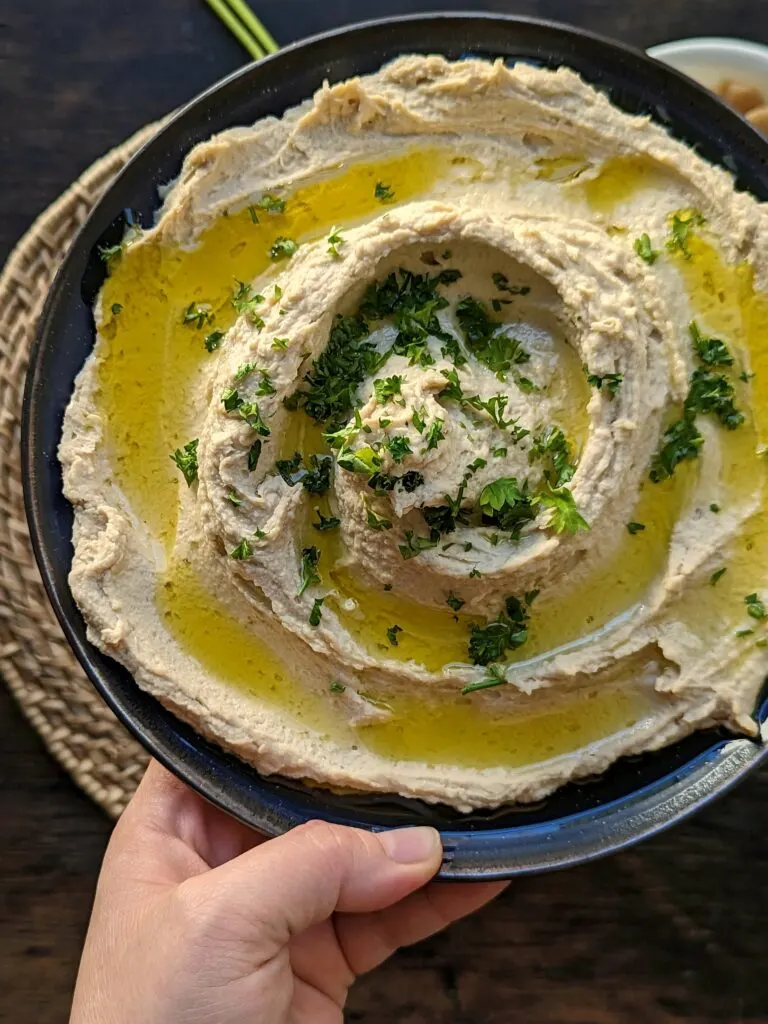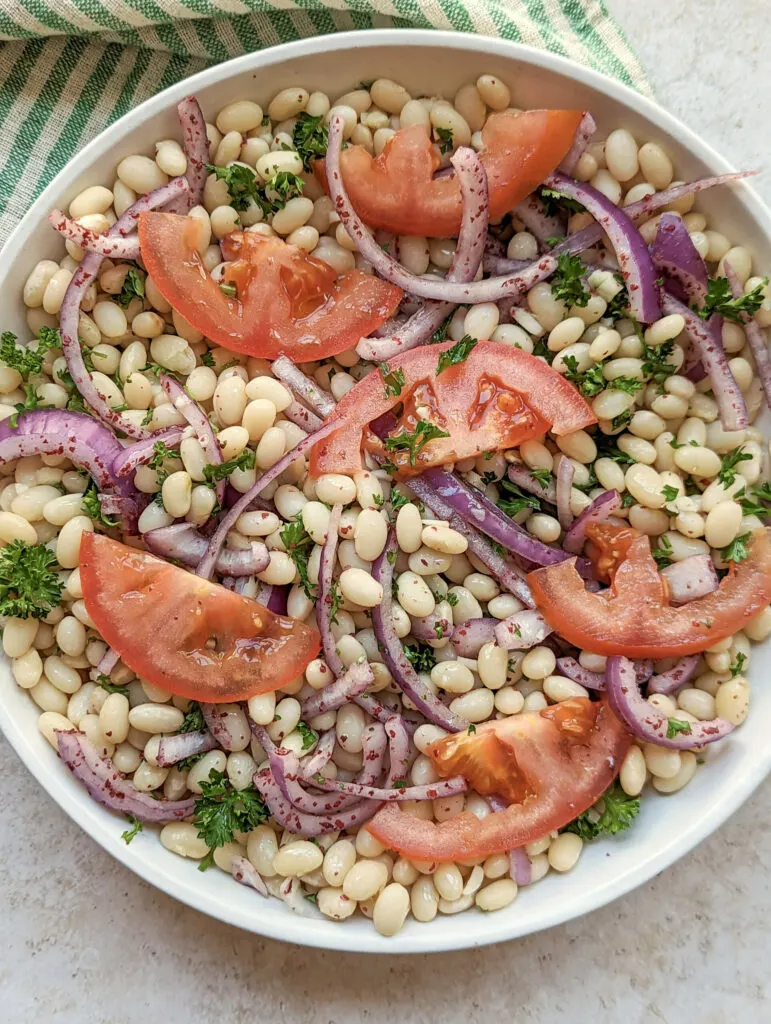Haydari is a tangy, yogurt-based dip with feta cheese, garlic and fresh herbs that you can serve as a condiment or part of a Turkish meze.
Try more of my dip recipes, and start with toum, sos czosnkowy, or raita.
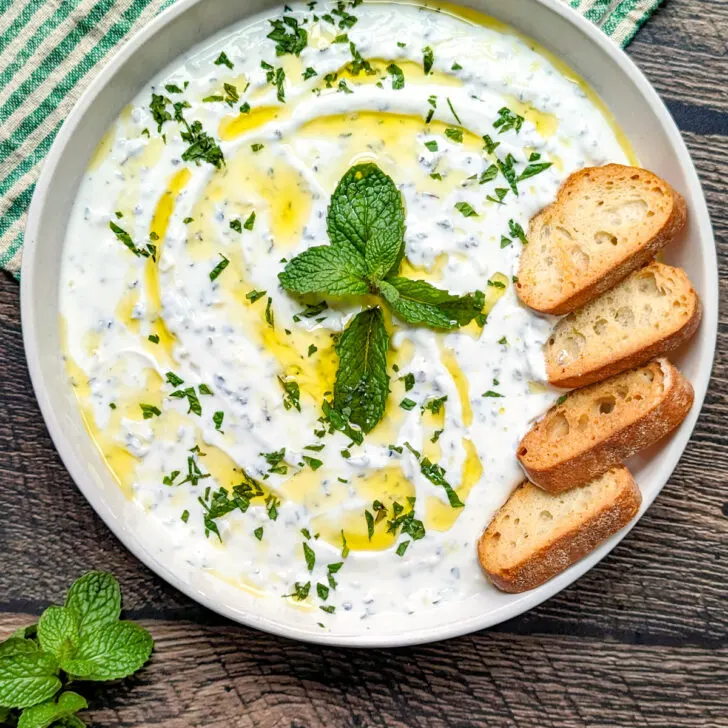
Why You’ll Love This Recipe
- The easy-to-make dip takes 5 minutes to make!
- Haydari is versatile, and you can customize the recipe to make it your own.
- With cooling ingredients such as Greek yogurt and mint, the Turkish sauce is ideal for spiced-meat dishes. You’ll want to serve it with everything!
- You will love the perfect balance of the creamy and rich ingredients.
What is Haydari Dip?
Haydari, pronounced like high-DAH-ree, is a Turkish dipping sauce traditionally crafted from tangy strained yogurt called süzme yoğurt and white cheese called beyaz peynir. It is commonplace on Mediterranean and Middle Eastern mezze with other small plates, a concept similar to Spanish tapas.
Ingredients You’ll Need
- Cheese: Use a good quality full-fat feta cheese with a soft texture stored in brine. If you don’t have access to a Turkish or Middle Eastern store, it’s the best replacement for beyaz peynir, which has the perfect tanginess.
- Garlic: I suggest using four fresh garlic cloves, but measure with your heart.
- Mint: Freshly chopped mint is a perfect addition, but if you have to use dried mint, use about one teaspoon.
- Yogurt: Traditional haydari recipes call for süzme yoğurt, a thick, strained yogurt. It’s hard to find in mainstream grocery stores, but you can often find them at local Turkish or Middle Eastern stores. If you can’t find süzme, use thick, store-bought Greek yogurt, labneh, or prepare homemade strained yogurt (see my instructions for straining cheese below).
- Lemon Juice: Cut the creaminess of the dip with freshly squeezed lemon juice.
- Salt: Season haydari with salt.
- Olive Oil: Drizzle olive oil over the top to serve.
Additions and Substitutions
Haydari is traditionally served on a plate or in a shallow bowl, flattened with a drizzle of olive oil, and topped with more fresh herbs. Other popular toppings are chopped walnuts, roasted pine nuts, or red pepper flakes, but here are more ideas to enhance the dip’s flavor.
- Stir in vegetables like roasted red peppers or eggplants.
- Top the Turkish yogurt dip with sweet pomegranate seeds for a bright pop of color, or try salty olives.
- I keep this haydari recipe simple, but you can add spices like smoked paprika, baharat, or za’atar.
- Spoon sauces like skhug, pesto, or chimichurri over the top.
- Replace the mint with fresh dill or fresh parsley.
- Finish the dip with a spiced butter made with butter, dried mint, and red pepper flakes. Sometimes, I like to warm butter and spices in a skillet and stir them into the yogurt dip.
How to Make Haydari
The full recipe with measurements is in the recipe card below.
Step 1: Add the feta cheese to a mixing bowl and mash the cheese with the back of a fork, then add the olive oil.
Step 2: Stir in the Greek yogurt, minced garlic, and fresh mint until combined. Taste and season with salt.
Step 3: Transfer the yogurt mixture to a serving bowl and garnish with fresh basil and a drizzle of olive oil.
How to Strain Yogurt
If you only have access to plain yogurt, learning how to strain it will save you a trip to the store. Süzme yoğurt is a variation of yogurt hung in muslin to remove the excess moisture, resulting in a thick and creamy consistency.
- Line a colander with a few layers of cheesecloth or paper coffee filters. Place it over a large bowl suspended to catch the liquid that strains out.
- Scoop the plain yogurt onto the cloth. Cover with plastic wrap and transfer it to the refrigerator.
- Let the yogurt strain for 5-6 hours. The longer it strains, the thicker it will become as more whey (the watery liquid) drains out.
- Check on the yogurt every so often. Once it reaches your desired consistency, discard the collected whey from the bowl (or save it for something else) and the thick yogurt in your recipe.
Expert Tips
- If you’re struggling to mash the feta, add the olive oil and yogurt to the feta to loosen it up. Or you can just put the feta cheese and yogurt in a food processor and pulse until it has a creamy texture. Transfer into a bowl and stir in the remaining ingredients.
- If you don’t have thick yogurt, you can strain it at home using a cheesecloth, colander, and a mixing bowl.
Searching for More Like This?
If you love this recipe, try one of these mezze dishes!
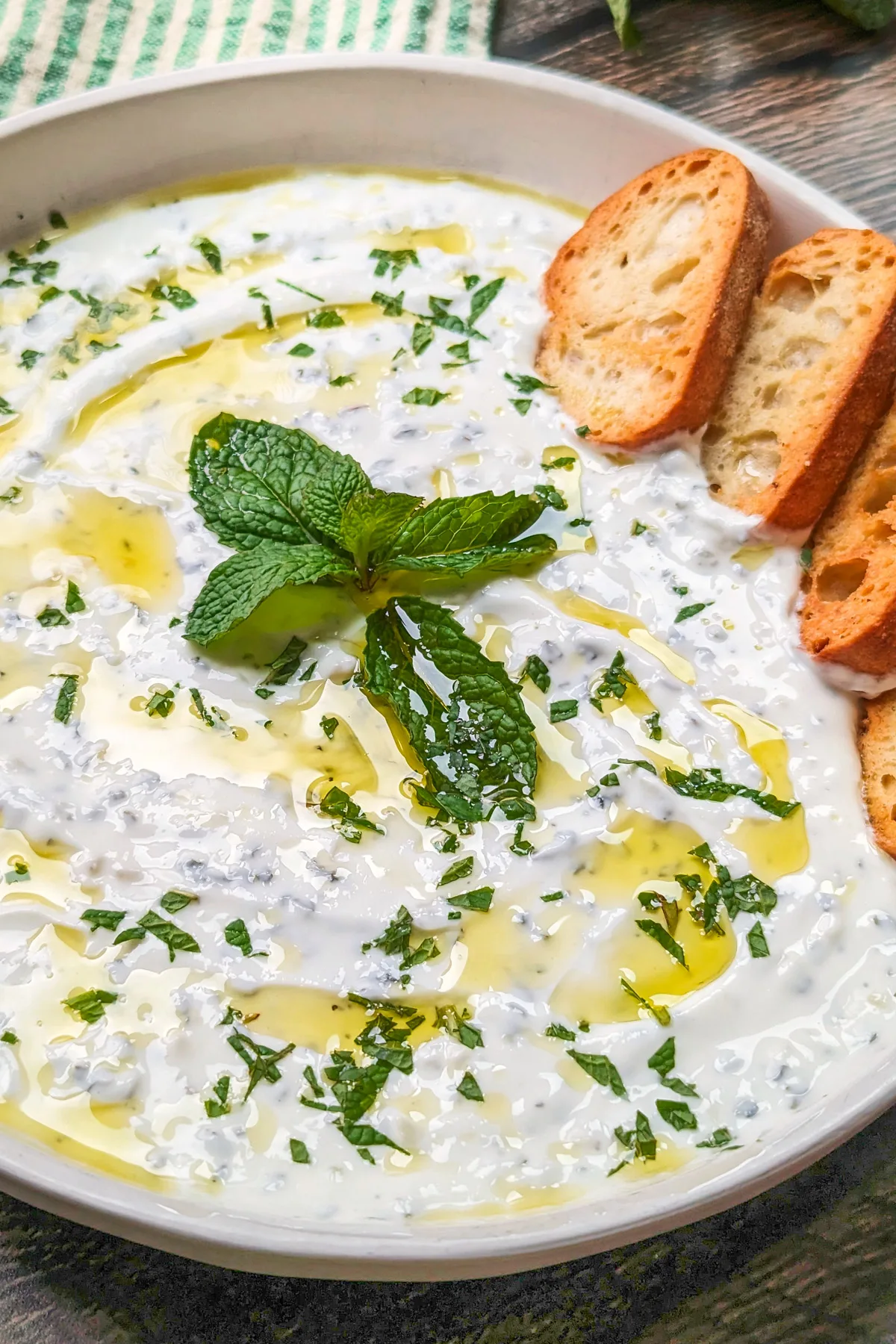
Serving Suggestions
Enjoy haydari with pide bread, pita, pita chips, potato fritters, zucchini chips, or crunchy raw vegetables such as cucumber, carrots, or celery. Drizzle the dip over salad, baked potatoes, and roasted vegetables. You can also serve the dip with meat dishes like roasted chicken or za’atar turkey, and you can spread it over burgers and sandwiches for a creamy addition.
What to do With the Leftovers
- Refrigerate – Store leftover haydari in an airtight container for 3-4 days. The dip might thicken once refrigerated, so bring it to room temperature before serving it with a fresh drizzle of olive oil.
- Freeze – I don’t recommend freezing the dip because of the dairy.
Frequently Asked Questions
Can you make the recipe in advance?
You can make the dip up to 2 days in advance. Remove it from the refrigerator 30 minutes before you serve it to bring it to room temperature.
Is haydari the same as tzatziki or cacik?
Haydari is a creamy dip made with yogurt, feta cheese, and fresh herbs, making it thicker, creamier, and saltier than tzatziki and cacik, containing yogurt and cucumbers.
Can I use plain yogurt to make this recipe?
Of course. However, since plain yogurt or dahi can be more runny, you should strain it overnight for the perfect consistency.
More Turkish Recipes:
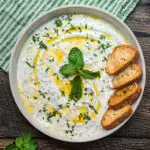
Haydari
- 3 ounces beyaz peyniri or feta cheese, smashed with a fork
- 1 tablespoon olive oil, plus more for garnish
- 2 cups Greek yogurt, strained
- 2 cloves garlic, minced
- 2 tablespoons fresh mint, chopped, plus more for garnish
- salt, to taste
- Add the feta cheese to a mixing bowl and mash the cheese with the back of a fork, then add the olive oil.
- Stir in the Greek yogurt, minced garlic, and fresh mint until combined. Taste and season with salt.
- Transfer the yogurt mixture to a serving bowl and garnish with fresh basil and a drizzle of olive oil.
- If you’re struggling to mash the feta, add the olive oil and yogurt to the feta to loosen it up. Or you can just put the feta cheese and yogurt in a food processor and pulse until it has a creamy texture. Transfer into a bowl and stir in the remaining ingredients.
- If you don’t have thick yogurt, you can strain it at home using a cheesecloth, colander, and a mixing bowl.
- Line a colander with a few layers of cheesecloth or paper coffee filters. Place it over a mixing bowl suspended to catch the liquid that strains out.
- Scoop the plain yogurt onto the cloth. Cover with plastic wrap and transfer it to the refrigerator.
- Let the yogurt strain for 5-6 hours. The longer it strains, the thicker it will become as more whey (the watery liquid) drains out.
- Check on the yogurt every so often. Once it reaches your desired consistency, discard the collected whey from the bowl (or save it for something else) and the thick yogurt in your recipe.
- The nutritional information shown is an estimate provided by an online nutrition calculator. It should not be considered a substitute for professional advice.

